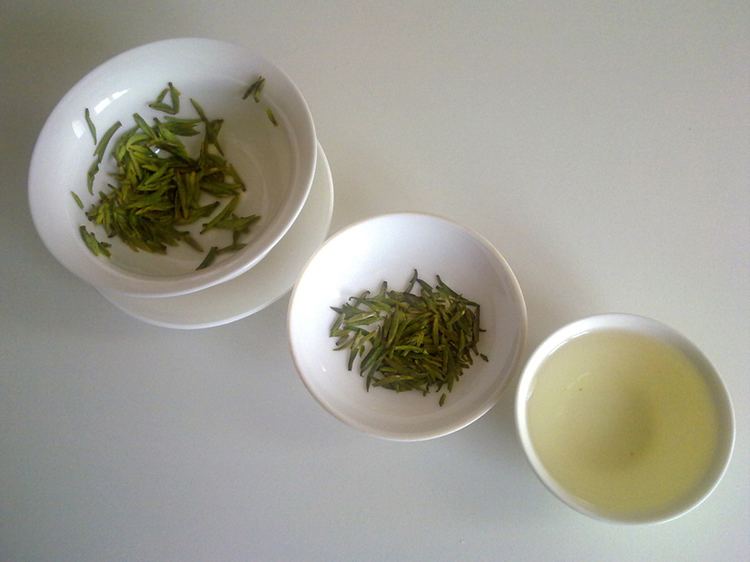 | ||
The phenolic content in tea refers to the phenols and polyphenols, natural plant compounds which are found in tea. These chemical compounds affect the flavor and mouthfeel and are speculated to provide potential health benefits. Polyphenols in tea include catechins, theaflavins, tannins, and flavonoids.
Contents
Polyphenols found in green tea include but are not limited to epigallocatechin gallate (EGCG), epigallocatechin, epicatechin gallate, and epicatechin; flavanols such as kaempferol, quercetin, and myricitin are also found in green tea.
Catechins
Catechins include epigallocatechin-3-gallate (EGCG), epicatechin (EC), epicatechin-3-gallate (ECg), epigallocatechin (EGC), catechin, and gallocatechin (GC).The content of EGCG is higher in green tea.
Catechins constitute about 25% of the dry mass of a fresh tea leaf, although total catechin content varies widely depending on species, clonal variation, growing location, season, light variation, and altitude. They are present in nearly all teas made from Camellia sinensis, including white tea, green tea, black tea and oolong tea.
Of all the catechins in tea, EGCG is the main subject of scientific study with regard to its potential health effects.
4-Hydroxybenzoic acid, 3,4-dihydroxybenzoic acid (protocatechuic acid), 3-methoxy-4-hydroxy-hippuric acid and 3-methoxy-4-hydroxybenzoic acid (vanillic acid) are the main catechins metabolites found in humans after consumption of green tea infusions.
Theaflavins
Catechin monomer structures are metabolized into dimers theaflavins and oligomers thearubigins with increasing degrees of oxidation of tea leaves. Theaflavins directly contribute to the bitterness and astringency of steeped black tea. The mean amount of theaflavins in a cup of black tea (200 ml) is 12.18 mg.
Three main types of theaflavins are found in black tea, namely theaflavin (TF-1), theaflavin-3-gallate (TF-2), and theaflavin-3,3-digallate (TF-3).
A number of laboratory studies on their possible health effects have been conducted.
Tannins
Tannins are astringent, bitter polyphenolic compounds that bind to and precipitate organic compounds. Gallic acid conjugates all of the catechins, such as EGCG (Epigallocatechin gallate), which are tannins with astringent qualities.
Flavonoids
A group of natural phenols called the flavonoids are of popular interest because researchers have found them to have the potential to contribute to better health. Tea has one of the highest contents of flavonoids among common food and beverage products. Catechins are the largest type of flavonoids in growing tea leaves. According to a report released by USDA, in a 200-ml cup of tea, the mean total content of flavonoids is 266.68 mg for green tea, and 233.12 mg for black tea.
